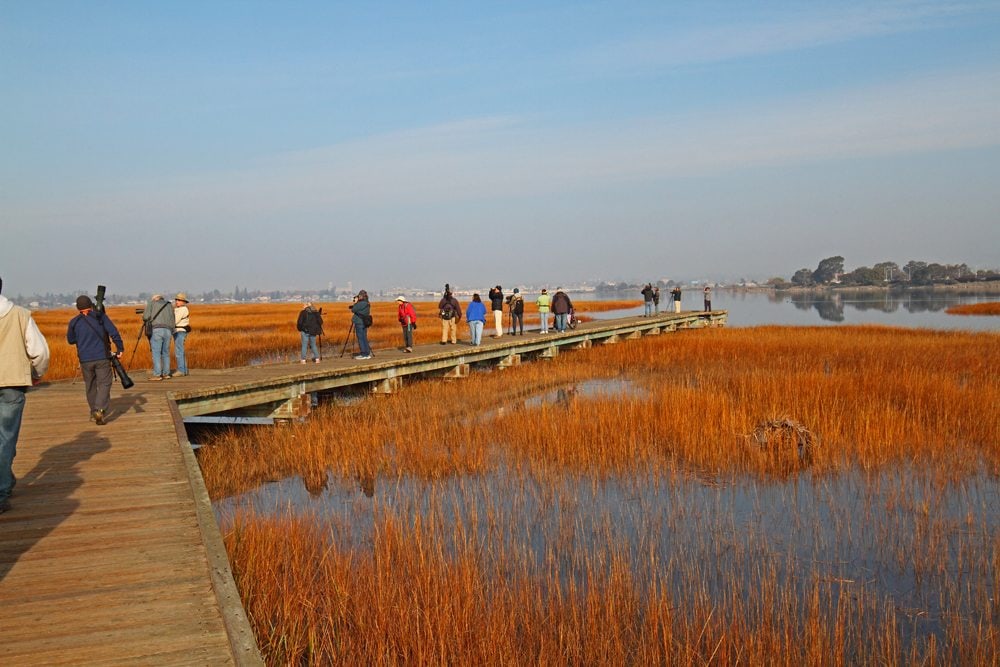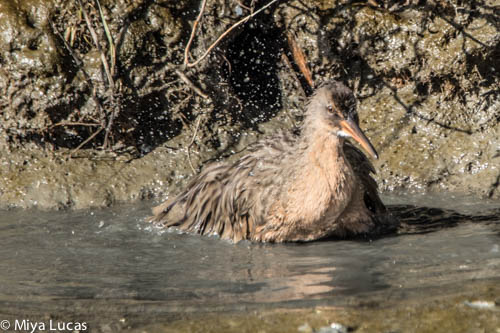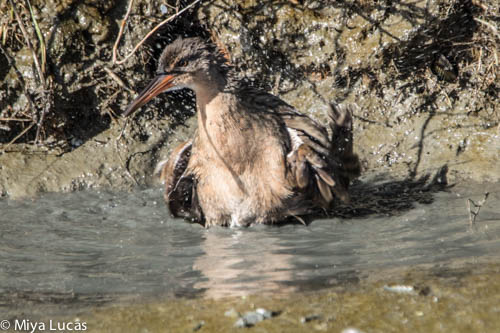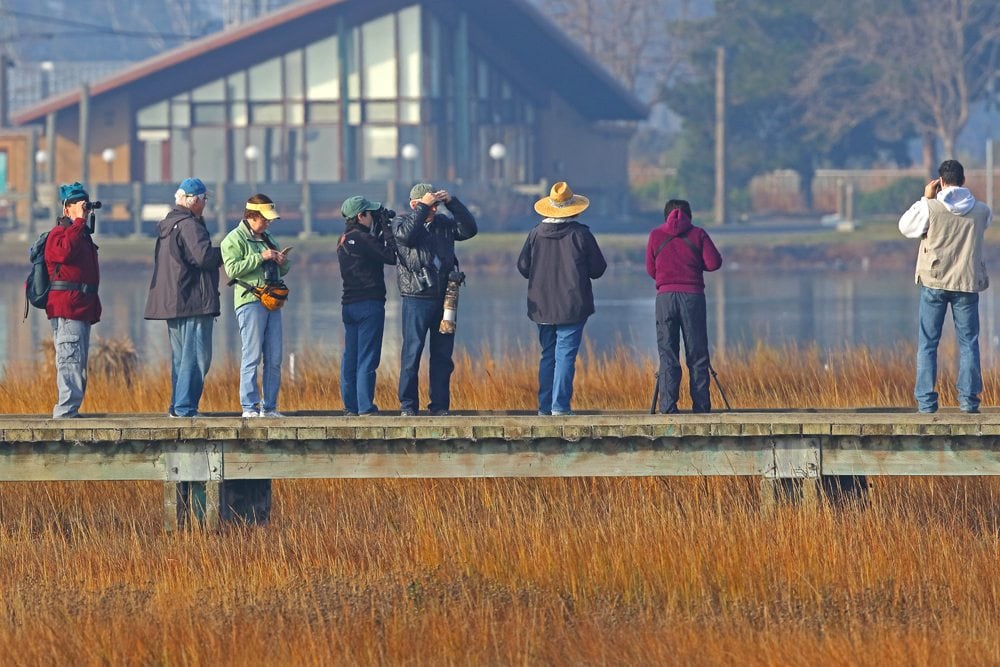Applause for the Ridgway’s Rail
By Miya Lucas
Walking on the shoreline of the North or East Bay, you have a chance to encounter one of our year-round residents that is also an endangered species – the Ridgway’s Rail.
Formerly known as California Clapper Rails, Ridgway’s Rails are secretive birds and you’re likely to hear them before you see them. Their clapping sounds remind me of hands clapping, like an audience applauding after a Berkeley Rep theater show. When I hear them, I picture Ridgway’s Rails applauding each other after making a quick guest appearance.
The first time I saw a Ridgway’s Rail was at Arrowhead Marsh at Martin Luther King Jr. Regional Shoreline in Oakland. It was a blistering cold winter day as well as a King Tide, an unusually high tide that drives the rails onto higher, more visible ground. There were lots of people there observing Soras and Ridgway’s Rails, along with what seemed like a million shorebirds roosting on the broken pier.


One Ridgway’s Rail in particular caught my eye. it was walking and preening on a large log about 100 feet from the shore, and seemed oblivious to the fifty or more humans observing it. I was captivated by the vivid orange colors on his breast and his bright shiny eyes, and then he opened up his wings and displayed another blast of color on the inner wings. He sang for us with his clapping call. It was love at first sight.
The Ridgway’s Rail is a very vocal bird. Although known for its clap, it has many different calls. During mating season, you may hear it clapping or purring like a cat. When frightened, it can shriek or cluck like a chicken. If something is threatening its chicks, it may sound like a Great Horned Owl, with a low “oom” sound.
Like owls, Ridgway’s Rail regurgitate pellets. They are not picky eaters and eat seeds, grasses, spiders, worms, insects, small fish, and occasionally small birds. They hunt by seeing or smelling their prey, although they also use their long slender bills to probe shallow waters. Like gulls, Ridgway’s Rails can drink salt water since they have salt glands that desalinate the water.
Living in the mudflats, they spend significant time bathing. They may use a a small puddle or a receding tide to wash themselves daily, usually at dusk, for 30 minutes or more.


Ridgway’s Rails are monogamous only during mating season and do not stay bonded for life. In one mating ritual, the male moves his tail horizontally to expose his white feathers and then moves his open bill side to side. Another mating ritual involves the male feeding the female. Once eggs are laid, both parents help with incubation.
The male rail builds the nest. Accommodating the ebb and flow of tidal waters, eggs can be kept submerged up to 17 inches and still hatch.
Ridgway’s Rails can fly, although their principle mode of transportation is walking… or, should I say, running. They appear to have one speed—fast and furious, like a drunken person zigging and zagging erratically.

Ridgway’s Rails are diurnal. The best time of the day to see them is usually dawn or dusk, their times of peak activity.
I love going to Arrowhead Marsh to see them. My personal favorite time is at low tide, when there are fewer people around and you can sit and watch them emerge from the pickleweed. They are shy so it can take a while to spot one: Once I waited patiently for about an hour and was happily rewarded with a few glimpses of them running back and forth from the pickleweed. To get a photograph of a Ridgway’s Rail one needs the three P’s: practice, patience, and persistence.
The more I learn about the Ridgway’s Rail, the more I want to share its beauty and its precarious existence. Because of loss of habitat and predation, it is on the state and federal endangered species lists. Here in the Bay Area, its predators include Norway rats and other four-legged animals like cats, dogs, raccoons, and red foxes.
Miya Lucas, an avid birder and photographer, completed the year-long Master Birding Class co-sponsored by Golden Gate Bird Alliance and California Academy of Sciences. (The next Master Birding class starts in February 2018: Click here for details.)
Miya co-leads monthly field trips for Golden Gate Bird Alliance to Las Gallinas Storage Ponds in Marin County. Check our Field Trips web page to find the date of her next trip to Las Gallinas. She has previously written blog posts about California Thrashers and Soras.

